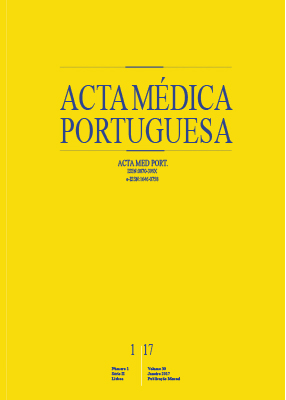Superiority of 18F-FNa PET/CT for Detecting Bone Metastases in Comparison with Other Diagnostic Imaging Modalities
DOI:
https://doi.org/10.20344/amp.7818Keywords:
Bone Neoplasms/diagnostic imaging, Bone Neoplasms/secondary Fluorodeoxyglucose F18, Positron-Emission Tomography, Radionuclide ImagingAbstract
Introduction: The 18F-NaF positron emission tomography/computed tomography is being considered as an excellent imaging modality
for bone metastases detection. This ability was compared with other imaging techniques.
Material and Methods: We retrospectively evaluated 114 patients who underwent 18F-NaF positron emission tomography/ computed tomography. Of these, 49 patients also had bone scintigraphy, 61 18F-FDG positron emission tomography/computed tomography and 10 18F-FCH positron emission tomography/computed tomography. We identified the technique that detected the largest number of bone metastases. For the detection of skeletal metastases with the 18F-NaF positron emission tomography/computed tomography study,
the contribution of the positron emission tomography component was compared with the contribution of the computed tomography component. Cases in which 18F-NaF positron emission tomography/computed tomography and bone scintigraphy required further additional tests for diagnosis clarification were registered.
Results: The 18F-NaF positron emission tomography/computed tomography was superior to bone scintigraphy in 49% of the patients
(p < 0.001); it was superior to 18F-FDG positron emission tomography/computed tomography in 59% of the patients (p < 0.001) and it was superior to 18F-FCH positron emission tomography/computed tomography in 40% of the patients (p < 0.001). None of the compared imaging techniques were superior to 18F-NaF positron emission tomography/computed tomography. The positron emission tomography component was superior to computed tomography in 35% of the cases (p < 0.001). Further investigation was suggested in only 3.5% of patients who underwent 18F-NaF positron emission tomography/computed tomography (45% for bone scintigraphy) (p < 0.001).
Discussion: As with other authors, our experience also confirms that 18F-NaF positron emission tomography/computed tomography is an excellent imaging modality for the detection of bone metastases, detecting lesions in more patients and more lesions per patient.
Conclusion: The 18F-NaF positron emission tomography/computed tomography showed a superior ability for the detection of bone metastases when compared with bone scintigraphy, 18F-FDG positron emission tomography/computed tomography and 18F-FCH positron emission tomography/computed tomography.
Downloads
Downloads
Published
How to Cite
Issue
Section
License
All the articles published in the AMP are open access and comply with the requirements of funding agencies or academic institutions. The AMP is governed by the terms of the Creative Commons ‘Attribution – Non-Commercial Use - (CC-BY-NC)’ license, regarding the use by third parties.
It is the author’s responsibility to obtain approval for the reproduction of figures, tables, etc. from other publications.
Upon acceptance of an article for publication, the authors will be asked to complete the ICMJE “Copyright Liability and Copyright Sharing Statement “(http://www.actamedicaportuguesa.com/info/AMP-NormasPublicacao.pdf) and the “Declaration of Potential Conflicts of Interest” (http:// www.icmje.org/conflicts-of-interest). An e-mail will be sent to the corresponding author to acknowledge receipt of the manuscript.
After publication, the authors are authorised to make their articles available in repositories of their institutions of origin, as long as they always mention where they were published and according to the Creative Commons license.









